HBO's "Ice On Fire" Offers Climate Solutions
Air Date: Week of September 4, 2020
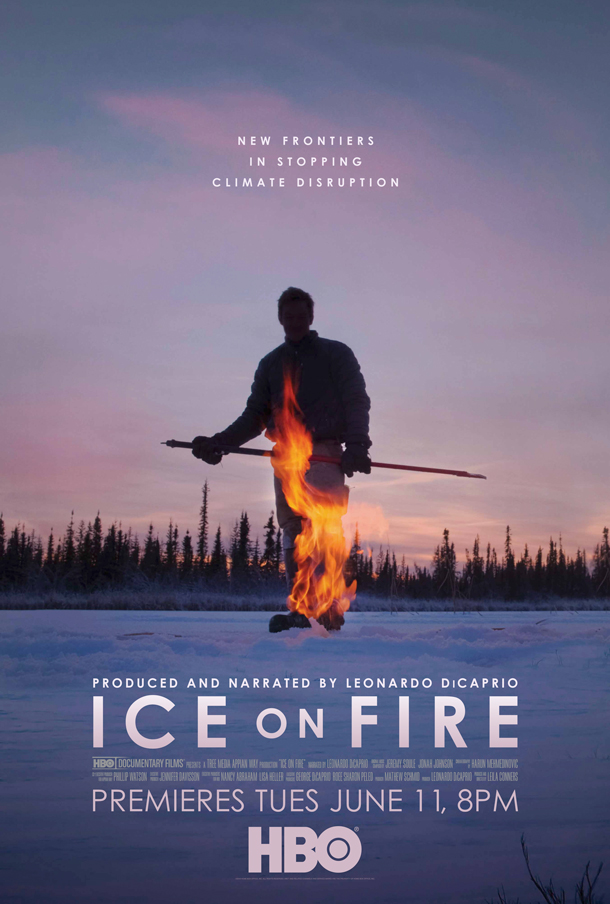
Ice on Fire is available for free through HBO. (Photo: Courtesy of HBO)
The Earth is warming and changing faster than many climate scientists had predicted, and at times the future looks impossibly grim. Yet practical and accessible solutions to climate change are already at hand. The HBO documentary “Ice on Fire”, produced and narrated by Leonardo DiCaprio, focuses on these solutions and on the scientists who are tackling climate change. Director Leila Conners joined Host Steve Curwood to discuss the making of the documentary and who it aims to reach.
Transcript
CURWOOD: It’s Living on Earth, I’m Steve Curwood.
[EXPLOSION SOUND]
CURWOOD: You might think you’re hearing a jet engine, but it’s actually methane leaking from the melting tundra in the Siberan Arctic that’s been set on fire. This ominous sign of global warming is also the title of a documentary about climate change, narrated by Hollywood movie star Leonardo DiCaprio. In contrast to many climate documentaries, Ice on Fire not only issues a dire warning, but it also seeks to inspire people to follow proven, safe, and sustainable pathways available right now that can reverse global warming. Leila Conners directed and edited Ice on Fire, and we’ll speak with her shortly, but first here’s a preview of her documentary, which you can watch for free, simply by going to the HBO website.
[FILM MUSIC]
DICAPRIO: Over the last 250 years we have in effect conducted the largest science experiment in history. The melting of the worlds snow and ice has now triggered multiple climate tipping points threatening the very existence of life on earth. Yet this disturbing future need not be set in stone. But the clock is ticking, scientists say we must implement these solutions immediately.
These natural disasters are so common now that people know it is going to happen to their community. It's not a matter of it but when. It is a wakeup call to everyone that climate change is here and that you need to plan for it.
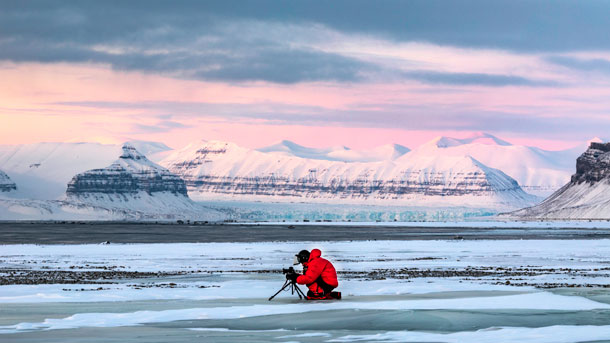
Ice on Fire took two years to make and features scenes taken from around the globe. (Photo: Courtesy of HBO)
MANN: In short you're looking at a world with less food, less water, and more people. And that's a recipe for a national security disaster.
DICAPRIO: Science tells us that our current climate crisis is a problem we created. But it is also a problem we can fix. Climate change can be recovered if we act now.
BENYUS: Climate change gives us an opportunity to really behave differently on this planet. We see what we can do at our worst, and now the question is, if we were to consciously be a part of the healing it will unleash, I think, our creativity. If we were to see ourselves as helpers and healers who can help the helpers heal the planet, that is so much better than seeing ourselves as disruptive toddlers with matches. You begin to realize that all of us are somehow connected to little bits of the solutions.
HAWKIN: Where do we stand? Is it possible? Is it game over, or is it, in fact, game on? Which is, we have, at hand, the ability, capacity, and solutions, that can reverse global warming...but reverse…
DICAPRIO: We are the first generation to see climate disruption and we are the last to fix it. It is time to end the delay, to listen and implement the solutions at hand time is running out, the ice is melting, decisive action must be taken now. There is no other option. This moment is within our reach, let us grasp it. It is up to us, each one of us, to save this unique blue planet for generations to come.
[FILM MUSIC]
CURWOOD: We just heard excerpts from the documentary Ice on Fire narrated by Leonardo DiCaprio and directed and edited by Leila Conners. Leila joins us now from Santa Monica to talk more about the film, available for free now on HBO. Thanks for joining us, Leila!
CONNERS: Hello, and thanks for having me.
CURWOOD: Describe for us the opening scene, we're looking from a drone and we see?
CONNERS: A snowcat climbing the mountain. And, we're not sure where we're going quite yet, but we see a female driving the snowcat in a blizzard white out. And, the first thing we finally hear is she says, you know, we have to come up here every Tuesday to collect the sample. And, you're thinking, what is that and all of a sudden, she pulls up to the shack in the middle of this mountain. We're at 11,000 feet, there's wind blowing, it's very cold. And, basically, she goes inside, and she pulls gas out of the air and into these canisters. And what she's doing is taking the weekly measurement of the atmosphere. And we find that this is how we've known about the carbon in the atmosphere for the last 50 years. The National Oceanic and Atmospheric Administration has been conducting these sample tests for 50 years in the same locations every week. And they also do it in 60 places around the world. For example, in Mongolia, there's a woman that takes these canisters and takes a train ride for 10 hours, and goes up a mountain to take the sample and come back. So, these are dedicated people, everyday people with science backgrounds that helped take the samples, and they're all sent back to NOAA in Boulder, Colorado for measurement. So, the reason why we started the movie like this is that we really wanted to say, look, you know, this is, this is a person that you and I can recognize. A hardworking person. And these are not liars. These are people who are gathering the data gathering the evidence that so that when we say carbons in the atmosphere, this is not a debate. It's like taking your temperature, right? And, we go on to explain later that, you know, the question carbon that they're measuring, is specific to fossil fuel burning. So let's C 13 carbon, natural carbon is C 14. And so they know exactly that it's human caused, it's never been a question.
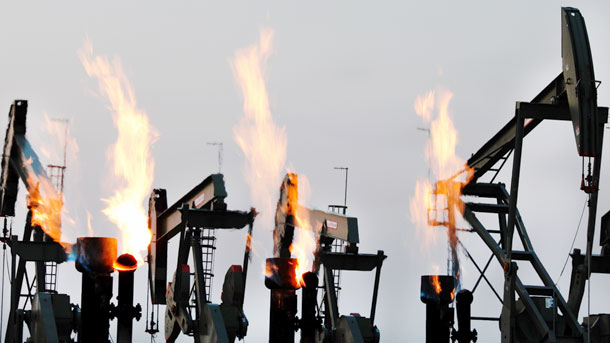
Fossil fuel burning is one of the leading causes of excess CO2 in our atmosphere. (Photo: Courtesy of HBO)
CURWOOD: And, of course, when you mean by C 13, is a carbon that's been sequestered in the earth for millions of years is no longer radioactive. And, the stuff that's out with us right now does have a little bit of radioactivity.
CONNERS: Precisely.
CURWOOD: Now, you and Leonardo DiCaprio have collaborated in the past, you did the 11th Hour back what in 2007, you are a codirector on that, doc, what inspired you and your team to make this film?
CONNERS: Well, as you know, things have not improved. And, we were very, very concerned about... Leonardo specifically, was concerned about methane, and what was happening in the Arctic and the spike in methane readings in the atmosphere. So, he wanted us to investigate that, and let people know about it, because as you know, it's a tipping point that we don't want to cross. And, alongside that, as you know, there's also innovation coming online, as well as more knowledge about how nature works. So, we just felt that there were a lot of new things that were occurring that we did not see in the general press. So, therefore, we decided to make the film!
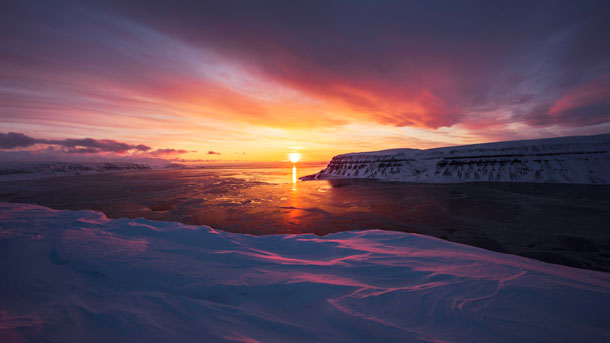
Ice on Fire earnestly attempts to persuade its audience that if they take action now then climate change can not only be halted, but reversed. (Photo: Courtesy of HBO)
CURWOOD: Your film is huge. You cover a lot of territory, you cover a lot of things. You yourself personally, were there in the editing booth to make it all come together. At the end of the day. Who are you trying to get to with this movie? Who are you trying to reach?
CONNERS: We're trying to reach people that are ready to step into this transformation. And, we know that could be almost anybody. We also know that there are people that are able to step into creating community gardens, step into planting trees, step into innovating, those were our primary targets. But, we also wanted to reach everyone through the beauty of it. And, that's what we concentrated on. We also had this idea that we wanted to show people the world from a human level. So, a lot of climate docs, and I've done a few, have very distant vantage points, often. Satellites and very high, distant, and we flew the drone, purposely at the level of a human being, at the height of human being. So, it was really bringing people into the world into the spaces where we were. And we felt that if we did that, and if we talked to people that work every day on this, that it would have more connectivity. And we're actually finding that that's actually the case, it is connecting.
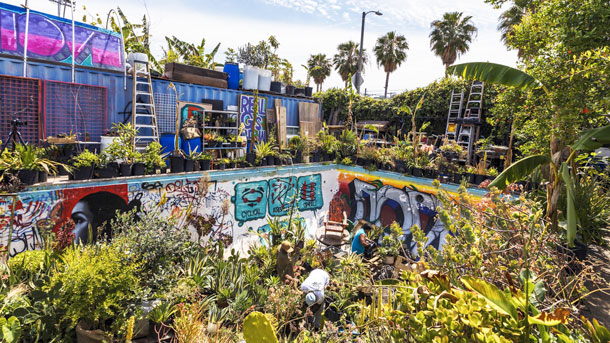
Urban farming is a great way to capture CO2 while creating healthy foods for a community. (Photo: Courtesy of HBO)
CURWOOD: So, what I'm hearing you perhaps say is that for folks who have a level of concern, who have some familiarity to this, that this is a shorthand guidebook for them to look at the possibilities, as well as the problems.
CONNERS: That's exactly it. It's sort of the update, it's like, here's where we're at. And, also, here's how the world works. And, this is how you can plug into it. So, what we tried to do is say, look, the carbon cycle is really the problem here. Because what we've done is disrupt the carbon cycle with fossil fuels. And, so, once people understand that, in the film we explain how it works, we understand Oh, okay, well, we can remove carbon from the atmosphere. You know, nature is our first line of defense, and also innovate and find other ways to do it.
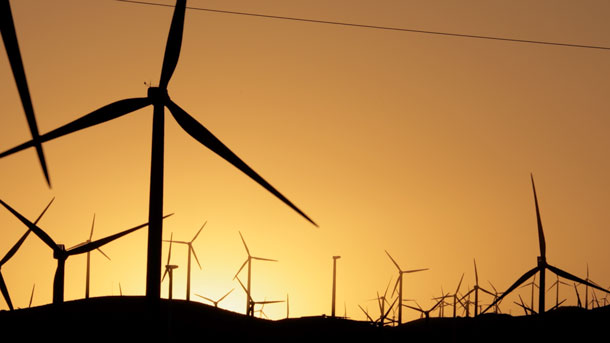
Renewable energy, such as wind power, has been in existence for a long time. Ice on Fire urges their audience to further implement these renewables to halt climate change. (Photo: Courtesy of HBO)
CURWOOD: Tell me about the scene where you show these carbon sequestering machines. They're big, shiny things with pipes, and they're making what? Coal, they're making diamonds, what are they doing?
CONNERS: They're making basaly rock in Iceland. So, basically, these carbon sequestering machines are made in shipping containers, just take a shipping container, put these pieces inside. So, it sucks atmospheric carbon out of the air, and then you can use it for stuff. Now, obviously, we need to turn some of it into stone. And, that's what they're doing in Iceland. So that it never comes back up. Again, you can also use the carbon from the sky to turn it into fuel. So, interestingly, direct air capture basically disrupts the fossil fuel industry. So right now, the fossil fuel industry is going around the world digging up stuff, you know, fracking and drilling. And that's just old news, now. You just have this little tiny machine, you can pull it out of the sky. Obviously, that is not reversing the load in the atmosphere, but at least it's not adding to. So, you know, it's something else I've been talking about where you know, people are innovating, people are declaring the climate emergency. And I'm very excited about that movement, and Sunrise Movement and Extinction, Rebellion, all this stuff. I mean, you really feel people are rising to the occasion. And a lot of climate scientist is looking director capture and said this is something very passive, it's reversing something that we've done. So yeah, a lot of climate scientists, as you see in the film actually support it.
CURWOOD: It's very interested in your film, you are quite subtle about making the point that keeping the rise to one and a half degrees centigrade is just the beginning of the long term game for humanity. Because we have to draw carbon back down even further so that we can refreeze the Arctic, and have the ecosystems that people used to live in here on the planet.
CONNERS: Well, yes, and I think what we're coming to understand, and that's why we had Daniel Rothman from MIT in the film, he's been studying carbon cycles over millions of years. And, as he said in the movie, you know, when carbon dramatically spikes in the atmosphere, the web of life collapses. And, so we have the Permian mass extinction, the PTM. And all of those, there's five mass extinctions that they have studied that all have the same signature have a high spike in carbon. So, what we need to do, you know, it draw that carbon down, like we said. 1.5 is the limit, where we are now as little over one, and that is result of the 400 parts per million. And like Jim white says, we're headed to 600 parts per million. That is just an untenable situation. I mean, that melts all the ice in the world. And that's happened in the past, in terms of other ages. I mean, there has been times where there has been no ice on the planet, but humans didn't live at that time.
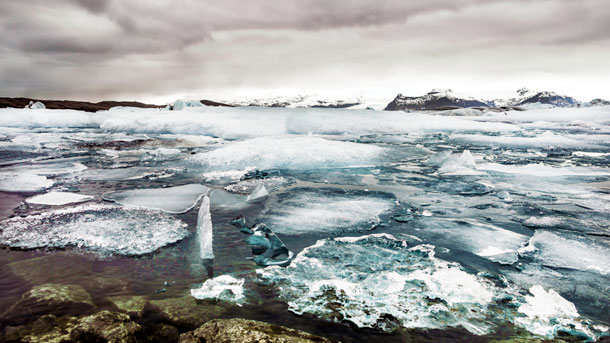
Ice is melting at record rates, causing sea level rise. (Photo: Courtesy of HBO)
CURWOOD: [LAUGHS] No. So, tell me about one of your most inspiring moments for you, when you were out on location.
CONNERS: The most inspiring thing was consistent across a lot of what we did, which was the earnestness within which these people do their work. And I think that's what comes across. I think that the hope that everyone's searching for, if you want hope, just go talk to the people that are dealing with this problem, because they're actively taking this on every day. And it gives you a sense of purpose and purchase on this. And that, to me is very, very heartwarming and inspiring.
CURWOOD: So, what was one of the most disheartening things that you encountered?
CONNERS: The sound of the dripping of the glacier in Iceland was the most haunting, and I still hear it in my mind. And, basically, when you're standing next to a glacier that's melting, like that, it's the sound of millions of tiny drops. So, it's not this crash and bang and whoosh. And, I'm sure it is that way, in some places. But, on a day to day basis, if you're standing next to a melting glacier, just millions of tiny little drops that are adding up to a little river that adds up to a wider river. And, that's the sound of the end of that glacier. And, that to me is horrifying.
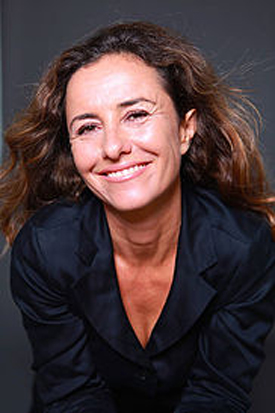
Leila Conners is the editor and director of the documentary film Ice on Fire. (Photo: Courtesy of HBO)
CURWOOD: What some call the tears of the Arctic.
CONNERS: Yeah.
CURWOOD: Leila, how hopeful are you? What are the odds of our civilization, utilizing the solutions that you talked about quickly enough to turn things around before we wind up with the hot house earth?
CONNERS: I think I'm hopeful because we actually have the solutions at hand. It's not a problem that we don't have the answer for. We have the answer. We just have to do it. And, so that's why the denial industry United States is so lethal, because it's slowing us down. We have to move on from fossil fuels and really, you know, mobilize to pull carbon out of the sky and stop putting carbon up into the sky. And I think we can because we have the solutions.
CURWOOD: Leila Connors is the director and editor of the documentary film, Ice on Fire. Thanks so much for taking the time with us today, Leila.
CONNERS: Thank you.
Links
Living on Earth wants to hear from you!
Living on Earth
62 Calef Highway, Suite 212
Lee, NH 03861
Telephone: 617-287-4121
E-mail: comments@loe.org
Newsletter [Click here]
Donate to Living on Earth!
Living on Earth is an independent media program and relies entirely on contributions from listeners and institutions supporting public service. Please donate now to preserve an independent environmental voice.
NewsletterLiving on Earth offers a weekly delivery of the show's rundown to your mailbox. Sign up for our newsletter today!
 Sailors For The Sea: Be the change you want to sea.
Sailors For The Sea: Be the change you want to sea.
 The Grantham Foundation for the Protection of the Environment: Committed to protecting and improving the health of the global environment.
The Grantham Foundation for the Protection of the Environment: Committed to protecting and improving the health of the global environment.
 Contribute to Living on Earth and receive, as our gift to you, an archival print of one of Mark Seth Lender's extraordinary wildlife photographs. Follow the link to see Mark's current collection of photographs.
Contribute to Living on Earth and receive, as our gift to you, an archival print of one of Mark Seth Lender's extraordinary wildlife photographs. Follow the link to see Mark's current collection of photographs.
 Buy a signed copy of Mark Seth Lender's book Smeagull the Seagull & support Living on Earth
Buy a signed copy of Mark Seth Lender's book Smeagull the Seagull & support Living on Earth

